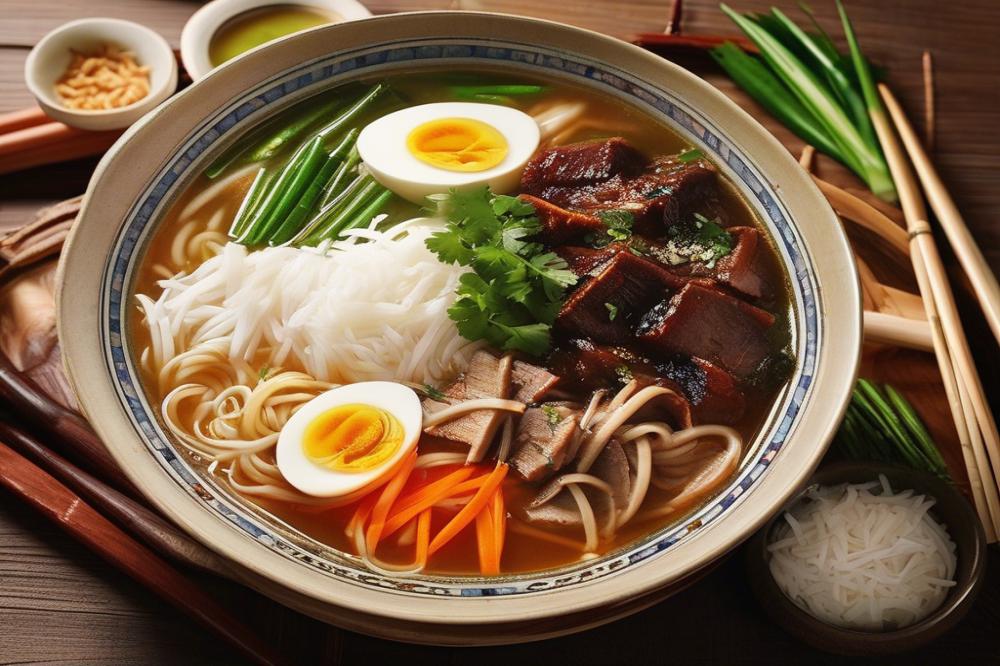Introduction
Gamjatang is a classic Korean dish loved by many for its rich flavors and comforting qualities. This hearty soup is made with tender pork neck bones, vegetables, and a spicy broth that warms the soul. In Korean cuisine, comfort food plays a vital role, bringing families together to share a delicious meal.
During colder months, hearty soups become especially appealing. They provide warmth and nourishment, making them ideal for those chilly evenings. A well-prepared Pork Bone Soup can fill the kitchen with delightful aromas, inviting everyone to gather around the table. The recipe often varies by household, showcasing the personal touches each cook brings to this traditional dish.
As the temperatures drop, learning how to cook Gamjatang can become a treasured skill. Knowing how to use the right ingredients and spices is key. Simple cooking tips can make the process enjoyable and fulfilling. Not only does this dish highlight the beauty of Korean cuisine, but it also satisfies the need for comforting, flavorful meals. In the end, a bowl of this spicy broth brings comfort and warmth to all who enjoy it.
What is Gamjatang?
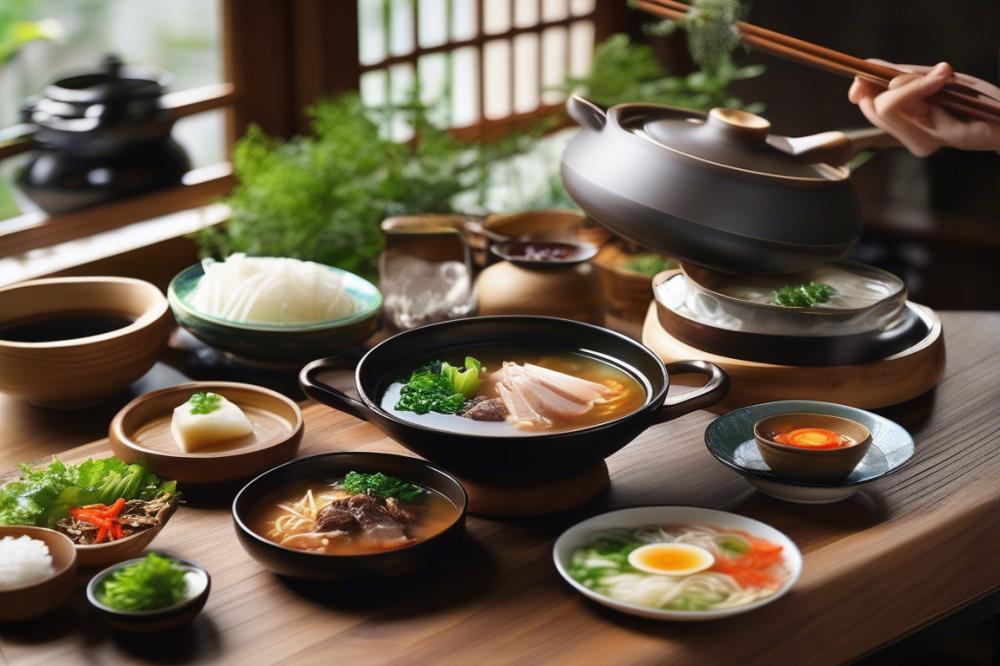
Gamjatang is a popular Korean dish known for its hearty and comforting qualities. This Pork Bone Soup features a rich, spicy broth that warms you up from the inside out. Its name literally means “potato soup,” but potatoes are just one of the many ingredients that create a delicious blend of flavors. The dish originates from Korea and has been served for generations, often enjoyed during colder seasons or after long nights out.
The recipe primarily uses pork neck bones. These bones are essential because they provide a deep, meaty flavor. When cooked slowly, the collagen in the bones breaks down and enriches the broth. This process results in a thick and satisfying texture. In addition to lending flavor, the bones offer nutritional benefits, making the dish more wholesome. Well-prepared gamjatang showcases the importance of quality ingredients.
Unlike other Korean soups, gamjatang stands out due to its bold spiciness and the use of pork neck bones. Other soups, such as kimchi jjigae or doenjang jjigae, tend to have different bases like kimchi or fermented soybean paste. Each recipe highlights unique flavors of Korean cuisine while providing its own comforting experience. A preference for spice may draw you toward this traditional dish, while milder options also exist.
Cooking tips for gamjatang include simmering the broth for several hours to allow flavors to blend fully. Ingredients like green onions, garlic, and perilla leaves enhance the overall taste. You might also find some versions include tofu or other vegetables, which add variety. If you want a more intense flavor, try adjusting the spice levels or adding more chili flakes. The beauty of this hearty soup lies in its versatility and depth.
Ingredients List and Nutritional Information
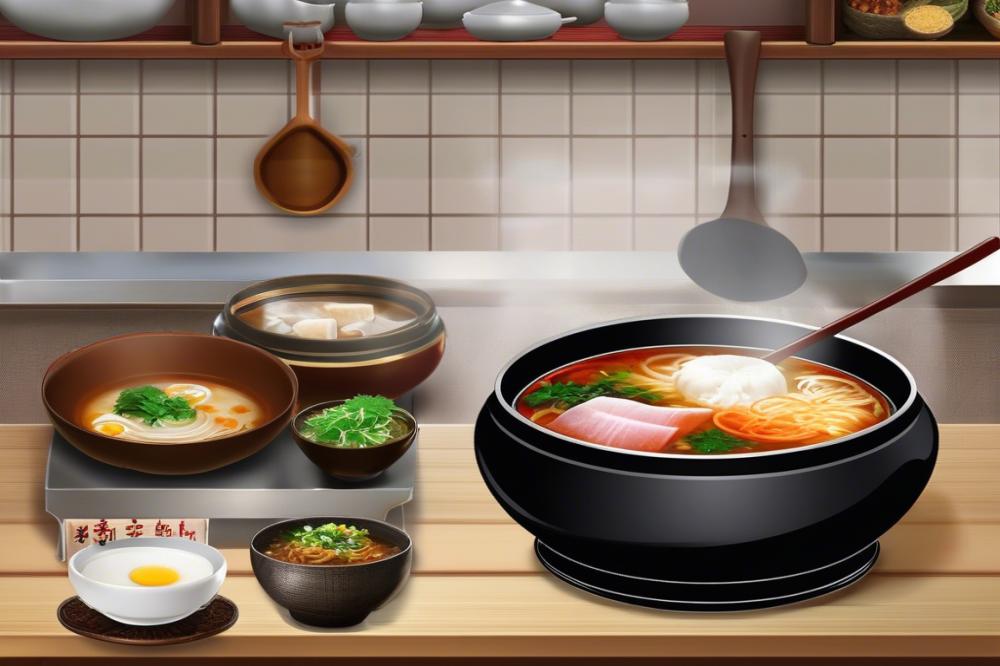
To create a delicious pork bone soup, gather the following ingredients. This traditional dish is popular in Korean cuisine, known for its rich flavors and hearty nature. Here’s what you will need:
- 2 lbs pork neck bones
- 2 cups potatoes, diced
- 1 cup napa cabbage, chopped
- 1/2 cup green onions, chopped
- 2 tablespoons gochugaru (Korean red pepper flakes)
- 1 tablespoon soybean paste (doenjang)
- 4 cloves garlic, minced
- 2 teaspoons ginger, minced
- 8 cups water
- Salt and pepper to taste
Each ingredient plays a vital role in developing the flavor, texture, and nutrition of this comfort food. Let’s take a closer look at the nutritional breakdown of each component:
Nutritional Breakdown
- Pork neck bones (2 lbs): Approximately 1440 calories, 104 g protein, 108 g fat, 0 g carbohydrates.
- Potatoes (2 cups diced): About 260 calories, 7 g protein, 0 g fat, 60 g carbohydrates.
- Napa cabbage (1 cup chopped): Roughly 20 calories, 1 g protein, 0 g fat, 5 g carbohydrates.
- Green onions (1/2 cup chopped): Around 16 calories, 1 g protein, 0 g fat, 4 g carbohydrates.
- Gochugaru (2 tablespoons): Close to 40 calories, 2 g protein, 0 g fat, 8 g carbohydrates.
- Soybean paste (1 tbsp): Roughly 35 calories, 3 g protein, 1 g fat, 5 g carbohydrates.
- Garlic (4 cloves, minced): Approximately 20 calories, 1 g protein, 0 g fat, 5 g carbohydrates.
- Ginger (2 tsp, minced): Around 10 calories, 0 g protein, 0 g fat, 2 g carbohydrates.
- Water (8 cups): 0 calories.
- Salt and pepper: Minimal calories, variable based on seasoning.
As you prepare to cook, consider each ingredient’s impact on flavor and health. When combined, they create a spicy broth that warms the soul. This recipe not only nourishes the body but also provides warmth during cooler months. Following these cooking tips will help you achieve the best results while making this satisfying soup.
Cooking Instructions
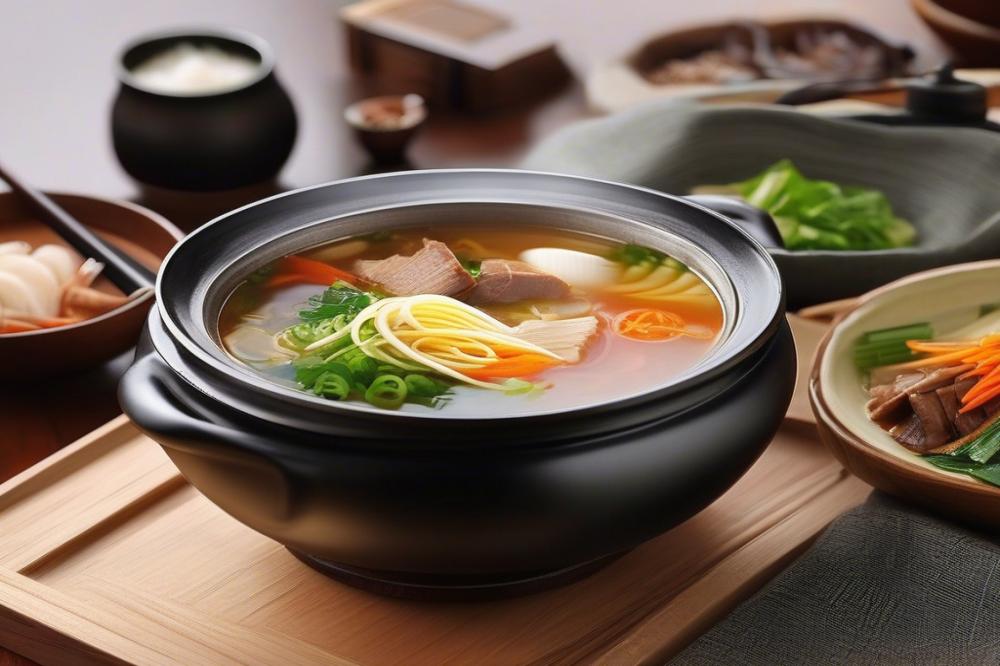
Step-by-step method for preparing gamjatang
Begin by preparing the pork neck bones. These bones are essential for creating a rich, hearty soup. Rinse them under cold water to remove any residue. After that, place them in a large pot and cover with water. Bring the mixture to a boil over high heat. Skim off any foam that rises to the top as it cooks. This helps to keep the broth clean and flavorful.
Next comes the simmering process. Reduce the heat, allowing the bones to simmer gently. Add more water if necessary to keep the bones submerged. You can let this cook for around 2 hours to extract maximum flavor. Stir occasionally to prevent sticking and to encourage an even cooking process. A well-simmered broth makes a difference.
When the broth has developed a rich flavor, add the potatoes and vegetables. Typically, you may include ingredients like napa cabbage, green onions, and Korean radish. Cut them into bite-sized pieces for easy eating. The potatoes will soak up the flavors while adding a creamy texture to the dish. Cook until all the vegetables are tender, which usually takes about 20 minutes.
For the final touches, it is time for seasoning. Incorporate gochugaru (Korean red pepper flakes) for a spicy kick. Additionally, include soy sauce, garlic, and sesame oil for depth. Adjust the seasoning to your taste. Serve the soup hot with a sprinkle of sesame seeds and chopped green onions on top. This traditional dish is perfect as comfort food during chilly days.
Tips for achieving the best flavor and texture
A few cooking tips can enhance your experience. First, the quality of the pork neck bones matters. Fresh, high-quality bones lead to a better broth. Consider using bone-in cuts for added richness. Secondly, simmering the broth longer helps infuse deeper flavors. Don’t rush this part; patience is key.
Experiment with your spices. If you prefer a milder version, adjust the amount of gochugaru. You might also add other ingredients, like mushrooms or tofu, for variety. Remember to taste as you go along. This ensures the balance of flavors is just right.
Serve with steamed rice on the side. It’s common to enjoy small bowls of rice alongside spicy broth. Sharing this dish with loved ones makes it even more enjoyable. Cooking together can bring everyone closer. When you follow these steps, you will create a memorable Korean cuisine recipe that brings warmth and joy.
Tips for Variations and Serving Suggestions
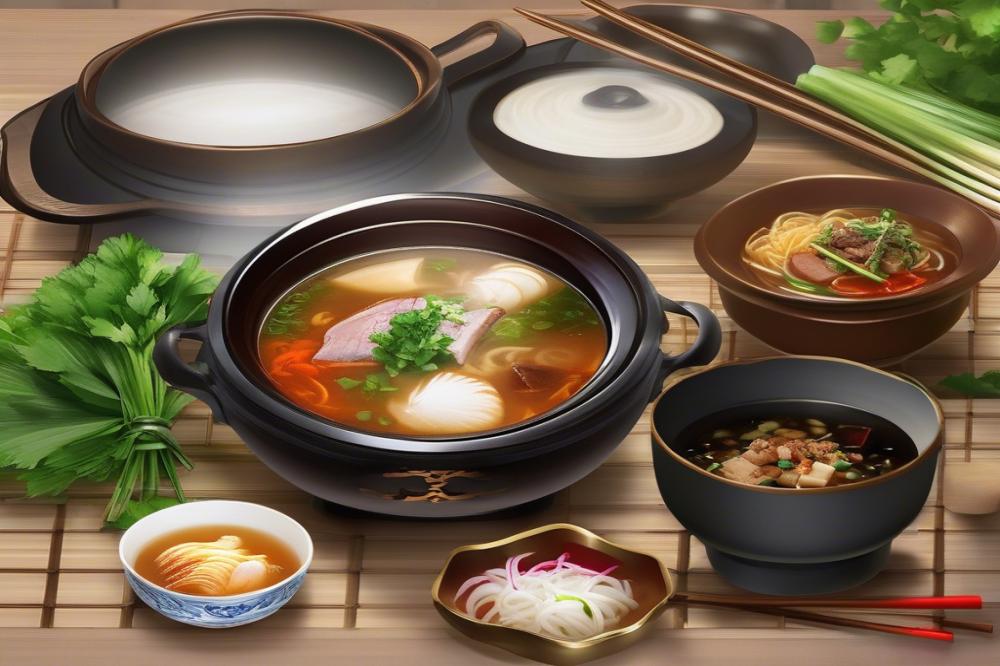
Customizing your pork bone soup can make it even better. Adding additional ingredients gives you the chance to create a unique taste. Consider using leafy greens like spinach or bok choy for extra nutrients. Root vegetables such as carrots can add sweetness, balancing the spicy broth. If you want more protein, try adding tofu or seafood. These options can change the dish from a traditional meal into something new.
Certain side dishes pair well with this hearty soup. Common choices include steamed rice or savory pancakes. The mild flavor of rice complements the rich broth and absorbs all the wonderful flavors. For a little kick, serve it alongside kimchi. This side dish brings a crunch and adds another layer of taste. Each bite will be more enjoyable when you mix the soup and sides together.
While learning how to cook this Korean cuisine staple, don’t forget presentation. Bowls should look inviting, as this dish is also about the experience. Garnish with sliced green onions or sesame seeds for a pop of color. Remember, how you serve it can enhance the dining experience. When friends or family see a well-prepared meal, it makes the soup even more appealing.
Final Thoughts on Cooking Gamjatang at Home
Cooking gamjatang at home is more than just following a recipe; it’s about embracing a cultural experience. This hearty pork bone soup holds a special place in many hearts. Its rich flavors evoke warmth and comfort, perfect for gatherings with friends and family. The spicy, savory broth combined with tender meat and nourishing vegetables is truly satisfying.
Trying your hand at this traditional dish can be a rewarding challenge. Many people find joy in sourcing fresh ingredients and taking the time to create something meaningful. Gathering your loved ones around the table, sharing a meal made with care, is a wonderful way to celebrate life’s moments. Better yet, cooking this dish can also expand your skills in Korean cuisine.
Take the chance to enjoy this culinary journey. The process allows you to experiment with flavors and techniques. Each step brings you closer to that perfect bowl of soup, filled with rich, complex tastes. Sharing this dish with others can turn an ordinary day into something special. So, gather your ingredients and start experimenting.
In conclusion, the joy of cooking lies not just in the finished product but in the journey itself. Making gamjatang is a wonderful way to connect with your culinary roots and share traditions. Embrace the flavors and experience the comfort that comes with preparing this delicious dish at home.

